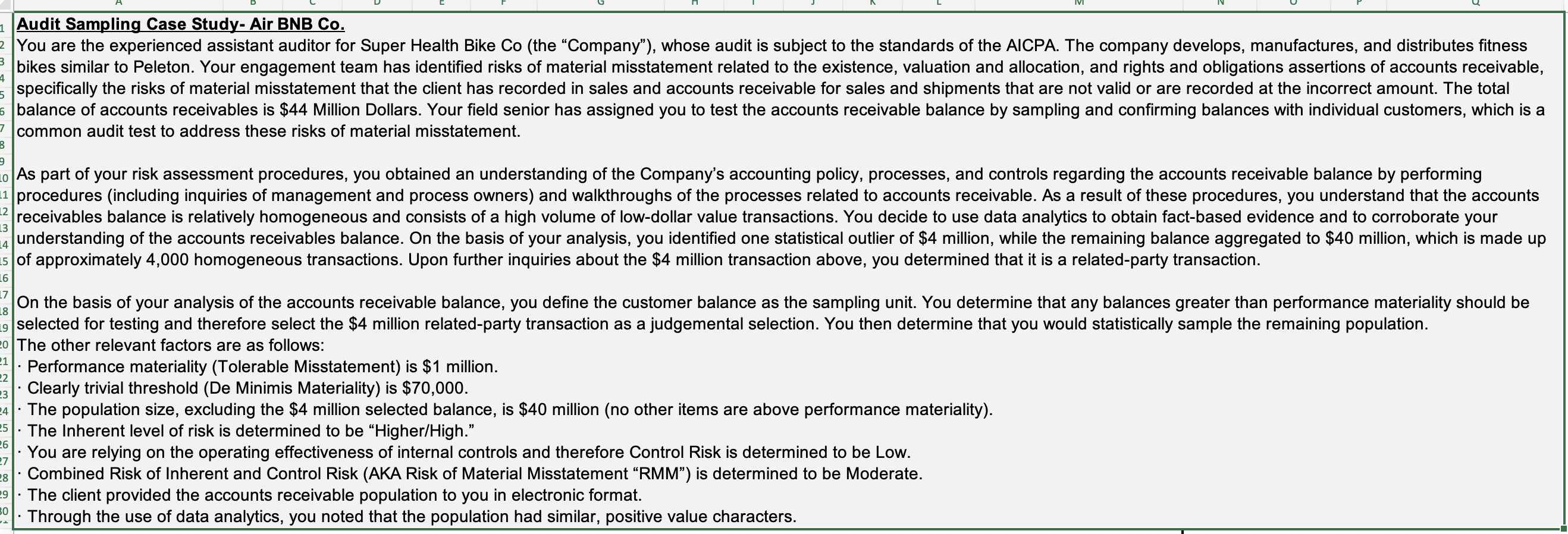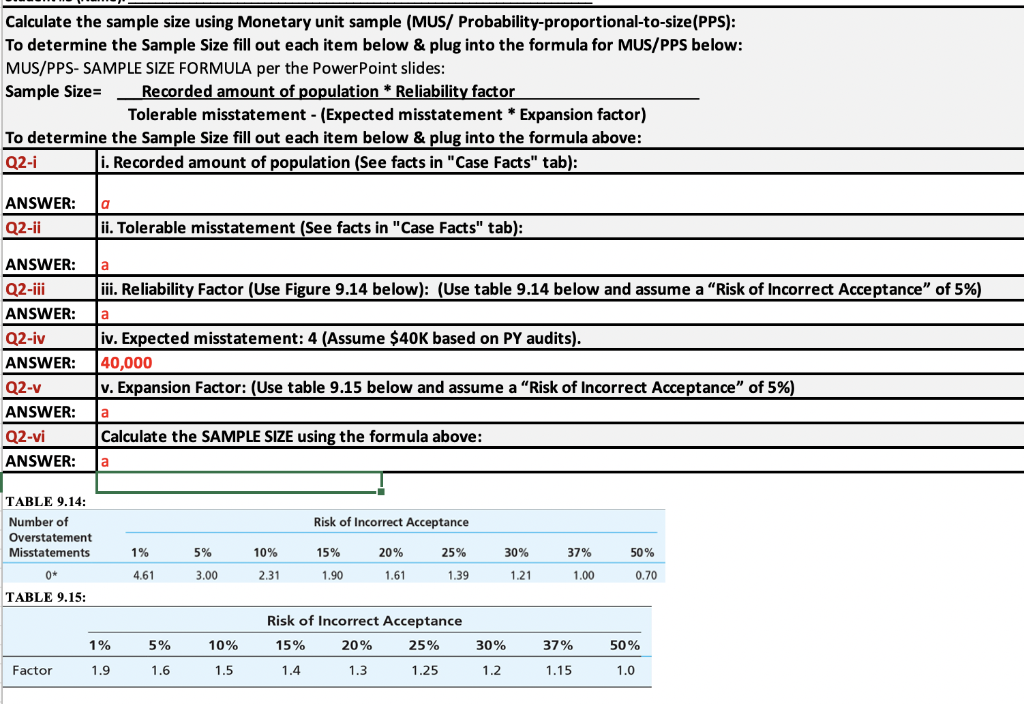

A B Audit Sampling Case Study- Air BNB Co. You are the experienced assistant auditor for Super Health Bike Co (the "Company"), whose audit is subject to the standards of the AICPA. The company develops, manufactures, and distributes fitness bikes similar to Peleton. Your engagement team has identified risks of material misstatement related to the existence, valuation and allocation, and rights and obligations assertions of accounts receivable, specifically the risks of material misstatement that the client has recorded in sales and accounts receivable for sales and shipments that are not valid or are recorded at the incorrect amount. The total balance of accounts receivables is $44 Million Dollars. Your field senior has assigned you to test the accounts receivable balance by sampling and confirming balances with individual customers, which is a common audit test to address these risks of material misstatement. 10 As part of your risk assessment procedures, you obtained an understanding of the Company's accounting policy, processes, and controls regarding the accounts receivable balance by performing 11 procedures (including inquiries of management and process owners) and walkthroughs of the processes related to accounts receivable. As a result of these procedures, you understand that the accounts receivables balance is relatively homogeneous and consists of a high volume of low-dollar value transactions. You decide to use data analytics to obtain fact-based evidence and to corroborate your 2 understanding of the accounts receivables balance. On the basis of your analysis, you identified one statistical outlier of $4 million, while the remaining balance aggregated to $40 million, which is made up 15 of approximately 4,000 homogeneous transactions. Upon further inquiries about the $4 million transaction above, you determined that it is a related-party transaction. On the basis of your analysis of the accounts receivable balance, you define the customer balance as the sampling unit. You determine that any balances greater than performance materiality should be 19 selected for testing and therefore select the $4 million related-party transaction as a judgemental selection. You then determine that you would statistically sample the remaining population. 20 The other relevant factors are as follows: 11. Performance materiality (Tolerable Misstatement) is $1 million. 31. Clearly trivial threshold (De Minimis Materiality) is $70,000. 24. The population size, excluding the $4 million selected balance, is $40 million (no other items are above performance materiality). The Inherent level of risk is determined to be Higher/High." . You are relying on the operating effectiveness of internal controls and therefore Control Risk is determined to be Low. 28. Combined Risk of Inherent and Control Risk (AKA Risk of Material Misstatement "RMM") is determined to be Moderate. 29. The client provided the accounts receivable population to you in electronic format. 1. Through the use of data analytics, you noted that the population had similar, positive value characters. Calculate the sample size using Monetary unit sample (MUS/ Probability-proportional-to-size(PPS): To determine the Sample Size fill out each item below & plug into the formula for MUS/PPS below: MUS/PPS-SAMPLE SIZE FORMULA per the Power Point slides: Sample Size= Recorded amount of population * Reliability factor Tolerable misstatement - (Expected misstatement * Expansion factor) To determine the Sample Size fill out each item below & plug into the formula above: Q2-1 Ji. Recorded amount of population (See facts in "Case Facts" tab): ANSWER: Q2-11 Jii. Tolerable misstatement (See facts in "Case Facts" tab): ANSWER: Q2-iii iii. Reliability Factor (Use Figure 9.14 below): (Use table 9.14 below and assume a "Risk of Incorrect Acceptance" of 5%) ANSWER: Ja Q2-iv liv. Expected misstatement: 4 (Assume $40K based on PY audits). ANSWER: 40,000 Q2-v v. Expansion Factor: (Use table 9.15 below and assume a "Risk of Incorrect Acceptance of 5%) ANSWER: Ja Q2-vi Calculate the SAMPLE SIZE using the formula above: ANSWER: TABLE 9.14: Number of Overstatement Misstatements Risk of Incorrect Acceptance 1% 4.61 5% 3.00 10% 2.31 15% 1.90 20% 1.61 25% 1.39 30% 1.21 37% 1.00 50% 0.70 TABLE 9.15: 1% 1.9 5% 1.6 10% 1.5 Risk of Incorrect Acceptance 15% 20% 25% 1.4 1.3 1.25 30% 1.2 37% 1.15 50% 1.0 Factor








